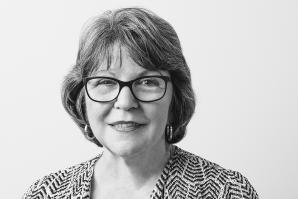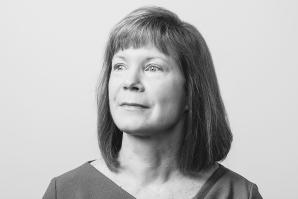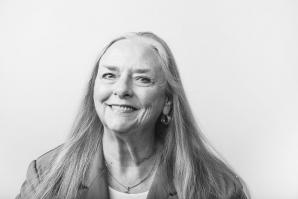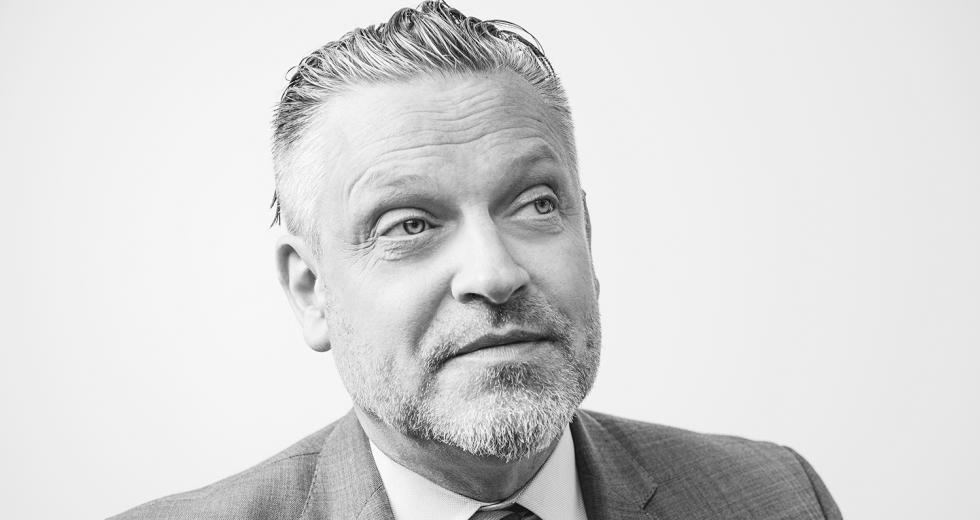Jonathan Porteus joined WellSpace Health as clinical director in 2002 and became CEO in 2011. WellSpace has operated in Sacramento (under various names) since 1953 and now provides medical, dental, behavioral health and support services at more than 30 sites in Sacramento, Placer and Amador counties. Comstock’s spoke with Porteus about how his organization works to achieve regional health.
How does WellSpace help fill gaps in our larger health care system?
I often say we’re really co-dependent. We’re much less interested in moving into a space that’s already occupied than filling in the gaps between. When we started growing as a Federally Qualified Health Center we were living in an environment where there were four islands of health — these incredible, world-class health systems (Dignity Health, Kaiser Permanente, Sutter Health and UC Davis Medical Center). The sea in between was fraught with no health access. A patient discharged from one of these hospitals, we used to call it “walking the plank.” They would leave a hospital where they had world-class care to a community where they didn’t have a provider, they had no access. There’s been sort of this perverse focus on how the hospitals should somehow take care of the rest of the universe, and for us it’s been to build something in the sea in between and then build bridges and continuity. Imagine a health delivery continuum, where people are getting preventive care (and) routine care, where maybe they’re getting a little sicker and they’re getting mild to moderate care. Then you get into a realm where you might need a specialist, or you need a hospital for acute care. If you build a continuum and you have the right care-transition vehicles along that continuum … from a more acute setting to a less acute setting, that’s what we’ve tried to do … for the low-income population.
We’re not achieving our mission alone, we’re doing it in partnerships. In Amador County, we filled in a gap where we’ve been asked by our local partners to take commercial insurance because there’s a lack of health access even for people who have commercial coverage. So we’ve kind of ventured into this realm of serving high-income folks that we’re not used to, and that’s an example of us being willing to meet the needs of a community.
WellSpace has undergone a lot of growth recently, correct?
We’ve grown by a factor of 30 in 10 years, and we’ve done that because we’ve met a need. When you hear that we acquired a network of clinics, (the) clinics have come and said, “Can we fold this into the network you’re building?” We’ve seen the same thing on the behavioral-health side, where some behavioral-health programs have folded in with us; women’s health, same thing. So we end up with this entity that is providing comprehensive services; it’s not so much predatory, we’re not conquistadors. It’s much more about what is the need in the community? If you look at the history of our community, you’ll see there was nothing for people to go to. … There’s not even been a public hospital for (Sacramento), and so we have gone from nothing to something, and that’s what accounted for the growth.
How does that growth tie in with the Affordable Care Act?
We started the growth in 2009, and it was a pretty steep curve. At that time, there were between 60,000 and 100,000 people who had no access to care (in Sacramento County). About 60,000 of those had Medi-Cal but still didn’t have a place to go. So our initial strategic initiative was to build a network of care for people who didn’t have access now. The Patient Protection and Affordable Care Act was signed, and that then changed things. In 2014, we saw a wholesale increase in Medi-Cal beneficiaries. (Sacramento County) went up, within the year of 2014, by about 110,000-120,000 Medi-Cal beneficiaries. The ACA really, really threw gasoline on a fire we’d already set. It was burning pretty hot already because of all the unmet need historically.
You’ve said before the ZIP code is more predictive of death than the genetic code. What does that mean?
There are some places in Sacramento where the only fresh food is a lime. We still have problems penetrating communities with real food. We know there are major concerns about air quality around Sacramento. … We’re already getting high rates of asthma, we’re already seeing communities that are impoverished, where there’s more violence, and all of those are predictive of health outcomes. If you have social determinants of health at the extremes we have, that’s actually going to impact your well-being way more than whatever you’re predetermined to have. When you look at those studies nationally and even internationally, we see the more you move to a bourgeois, middle-class, upper-middle-class environment, the better the health outcomes become.
“One in three Californians has Medi-Cal, so with less than 5 percent of Californians unemployed, that means the vast majority of people on Medi-Cal are actually working. There is a misunderstanding about that.”
We definitely include a focus on trauma-informed care. We understand that early life abuse, neglect — could be in the shape of not having access to resources, food, etc. — have lasting consequences on self-esteem, self-perception. Also (in terms of) physical health, we know there’s a correlation between irritable bowel syndrome in adulthood and a hostile environment in childhood, which kind of makes sense. When you think about sitting and eating at the table with your family, if it’s violent that’s a scary place to eat, so you (are) literally metabolizing food in fear. So it doesn’t surprise anyone that later in life that whole digestive system is still influenced. We try to take that into account. We have cultural groups like Latina patients who will have physical pain symptoms that we know are manifestations of depression, for example. Thirty-three percent of adults walking through the door are positive for mild to moderate depression, and we know that in some cultural groups it manifests in a physical way. We literally will check for pain, if there’s no obvious cause, it sometimes is resolved with an antidepressant.
Tell me about the Women’s Health program, which is offered at five locations throughout the region.
More than 50 percent of children being born in California … are born to women from a low-income population. … We want to make sure the prospective mother is healthy and that she’s developing a healthy baby. These are clients who have often had no access to care or have been neglected. We try to do outreach and find women as soon into their pregnancy as we can to bring them into this comprehensive, perinatal-care program. We give them access to high-quality OB-GYN services, our providers are in the hospital, attending to the delivery. (We follow up) with well-baby visits and postpartum visits.
We have known for a long time that women of color have babies that are twice as likely to die than babies of other ethnic groups. … No one stopped to say, “Well, how are we going to stop that?” For example, women of color don’t absorb (sunshine) the same way as someone who’s not black; they’re more likely to have a vitamin D deficiency. So you compensate by giving them a bottle of vitamin D — (which costs) like a couple dollars — and then they drink it. If they go untreated, that increases the likelihood the baby will be premature or low birth weight. Giving them vitamin D and watching them drink it is actually an effective intervention for increasing the likelihood they’ll take the baby to term and the baby will have healthy birth weight. It’s pretty basic, right?
The cervical length at 23 weeks is predictive of prematurity and low birth weight. The best way to check that is do an ultrasound and see how long the cervix is. There is no 23-week ultrasound. Medi-Cal won’t pay for it. So we’ve written grants to bring in dollars to pay for those ultrasounds.
WellSpace runs suicide-prevention crisis lines, started in the 1950s — tell me about any changes or advancements in that program.
We serve over 50 counties in California. We have a primary focus in the northern counties, but we’re the rollover for many southern counties. We take about 40,000 calls a year; 26 percent of them are considered to be highly lethal … which triggers a trace. We call law enforcement and say, “Trace the last call we got, and then send out a welfare check.” We have this incredible team that goes into that space with people between their life and death, and typically results in a favorable (outcome). We’ve tried to be more proactive. I should mention many of the calls we receive are third-party calls. If you’re worried about a friend, you can call the suicide hotline, and we’ll call (your friend). It’s definitely easier for us to call professionally, than for a friend to know what to do, and we would rather help people regret doing something than not doing something.
In terms of the passivity of a suicide hotline, we’ve tried to flip that so one of the things we’ve done is try to support the hospitals in the region. Every year, in Sacramento County alone, about 800 people are discharged from the emergency room after being treated for injuries secondary to a suicide attempt. … (We) offer the emergency department an opportunity to document the name of the person, phone number, signature, fax it through to our hotline, and then we call that person every day for 30 days. This program has been very, very successful. We’ve had no (suicide deaths among participants).
We’ve been supporting the I Got Your Back (campaign) through Patrick Mulvaney … to support people in food service. … We also monitor for clusters … an experience of a suicide exposes people to a new set of behaviors many people never thought of as an option, and, unfortunately, that is part of this contagion, so we try to inoculate people just like you would with any vector. In a lot of ways, the work we’re doing with Patrick Muvlaney is about vectoring, providing a positive, anti-suicide component in every shift, in every food-service environment.
How does WellSpace serve the homeless population?
We have a program we’ve been running since 2005 called the Interim Care Program. Someone who’s homeless and in a hospital — if they’re sick — is less likely to be discharged because the doctors in the hospital are frightened of what will happen if they’re back on the street.
Let’s say you’ve got a big cut. If you live in a home, they’ll give you materials to clean your injury and discharge you. If you live on the street, they won’t discharge you, so they might wait for your cut to heal. On average, someone who’s homeless stays in a hospital for three weeks longer than someone who’s not. In the meantime, how can we use that time as an opportunity to engage someone in care, get them benefits and try to find them housing?
The Interim Care Program is an intervention between the health system and WellSpace to build a nurse-managed, medical respite program. When people are ready to go to a clean, safe place, they can be discharged to that program. We built suites of hospital beds inside (area) shelters and we operate (the program) there. We keep peoples’ wounds clean, we keep them safe and out of the cold, we give them medical respite, but we also engage them in case management, care benefits, get them into housing and get them to establish care for behavioral health. We use that critical recuperative time to access services rather than just linger in a hospital bed. It’s a really cool program, and we’re honored to be a part of this truly communitarian effort by a bunch of partners in the region.
“We’ve grown by a factor of 30 in 10 years, and we’ve done that because we’ve met a need. When you hear that we acquired a network of clinics, (the) clinics have come and said, ‘Can we fold this into the network you’re building?’”
Our readers include CEOs and executives; they’re not part of the low-income or homeless population. Why should they care about the work of WellSpace?
What we’ve done is build a treatment industrial complex around service delivery for low-income people. … The incredible industrial and business strength of Sacramento is complemented by this and can be brought to bear on it, and that’s what the treatment industrial complex is — we use a lot of those services. We built to scale. It may be that a specialist previously didn’t want to see people who had Medi-Cal, but it was because they came in dribs and drabs. We request over 6,000 referrals a month from our health centers, so we’re able to deliver a predictable scale to (specialists) who will say, “I’m going to devote two of my days a week to the Medicaid population because I know there’s a flow of patients at scale.” You will see that our specialty network — stuff we don’t do in primary care — has come closer. … Our dental practice used to send kids to Stockton for specialty services. Everything is here now.
We have record low unemployment. People think of Medicaid beneficiaries as poor, unemployed people. One in three Californians has Medi-Cal, so with less than 5 percent of Californians unemployed, that means the vast majority of people on Medi-Cal are actually working. There is a misunderstanding about that. (WellSpace) supports the workforce — we keep people at work, we keep their kids at school, and they contribute to the economy. … I still go to meetings where people say derogatory things about people on Medi-Cal, and the reality is next time they sit down at a restaurant, the person handing them their food is on Medi-Cal.
When you come into one of our health centers, it looks just like the commercial one I go to. That’s the goal: We neutralize the difference, we focus on health, and we build a workforce and a healthier population. Back to (our) mission, achieving regional health — we bring up the well-being of the least well-off, we change total health for a community, we change total health care costs for a community. If we make people healthier, you’ll see dramatic decreases in emergency room utilization, and so there’s this bending of the cost curve away from acute care toward preventive and primary care. That could do nothing but good. We rent a lot of facilities, we built a lot of things, we contribute to the economy in a very large way with payroll for almost 900 employees.
—
Get this and other stories delivered to your inbox weekly: Sign up for our free email newsletters by clicking or tapping here.
Recommended For You

Chamber Challenge
El Dorado County Chamber of Commerce CEO on issues facing businesses in its rural communities
Comstock’s spoke with Laurel Brent-Bumb, CEO of the El Dorado County Chamber of Commerce, about efforts to make this largely rural region a desirable place to do business.

Pathway to the Future
Los Rios Community College District Chancellor Brian King on new opportunities — and new funding
Comstock’s recently spoke with King (who is also a member of our editorial advisory board) about challenges faced by community college students and how Los Rios can help train the workforce of the future.

Flying High
Sacramento County Airport System Director Cindy Nichol on rapid growth and planning for the future
Cindy Nichol became director of the Sacramento County Airport System in October 2018, bringing more than 30 years of experience in airport management to the position. Her career includes stints at San Francisco International Airport and the Port of Portland. Comstock’s recently spoke with Nichol about the four-airport system she oversees.

Growing Pains
Citrus Heights Mayor Jeannie Bruins on changes since cityhood, including plans to attract more businesses and jobs
Jeannie Bruins knows Citrus Heights; she’s lived there for 35 years and has served on its city council for five terms. She also co-chaired the campaign to give Citrus Heights cityhood in 1996. Comstock’s spoke with Bruins about how the community has changed and what’s in store for the future.



